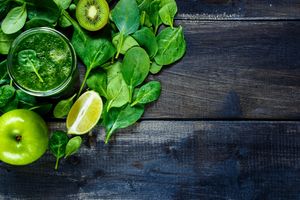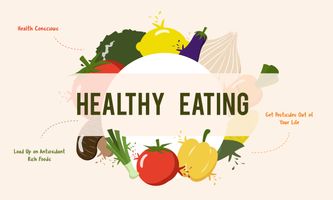
Discover the Power of Nutritious Foods
Optimizing Your Diet: Essential Tips for Boosting Energy and Health Through Nutrition. Food and Energy Levels: What’s the Connection?
Energy is the fuel that drives us through our daily lives, powering everything from physical activity to mental focus. But have you ever considered how the foods you eat directly influence your energy levels? The connection between food and energy is undeniable, and understanding this relationship can significantly impact your productivity, mood, and overall well-being.
What is the science behind food and energy
The food we consume is converted into energy through a process known as metabolism. Carbohydrates, proteins, and fats are broken down into glucose, amino acids, and fatty acids, respectively, which are then used by our cells to produce energy. However, not all foods provide energy in the same way or at the same rate.
For instance, simple carbohydrates found in sugary snacks and refined grains can cause a rapid spike in blood sugar, followed by a sharp drop—often leading to a quick burst of energy followed by fatigue and sluggishness. On the other hand, complex carbohydrates, proteins, and healthy fats provide a more sustained release of energy, helping you stay alert and energized throughout the day.
Energizing Foods to Power Your Day
To maintain consistent energy levels, it's crucial to focus on foods that offer a steady release of energy rather than quick fixes that lead to crashes. Here are some foods that are known for their energizing properties:
Oats: A great source of complex carbohydrates and fiber, oats provide a slow and steady release of energy. Starting your day with a bowl of oatmeal can keep you feeling full and energized for hours.
Bananas: Packed with natural sugars, fiber, and potassium, bananas offer a quick energy boost while also supporting sustained energy levels due to their fiber content.
Nuts and Seeds: Almonds, walnuts, and chia seeds are rich in healthy fats, protein, and fiber, making them excellent choices for a mid-morning or afternoon snack that keeps energy levels stable. Nuts are incredibly healthy and packed with beneficial fats. I always keep a variety of nuts in my pantry and make it a habit to enjoy a handful daily.
Leafy Greens: Vegetables like spinach and kale are high in iron, which is essential for maintaining healthy energy levels, as iron helps transport oxygen to your cells.
I often blend leafy greens into my breakfast smoothies, which are packed with nutrients and help keep me full until lunchtime. I use milk and yogurt as the base for a creamy and satisfying start to the day.
Whole grains foods like brown rice, quinoa, and whole wheat bread are packed with complex carbohydrates and fiber, providing long-lasting energy.
Lean Proteins such as chicken, turkey, and fish are great sources of protein that help build and repair tissues, and they also provide a steady source of energy.
Although water is not a food, it's essential to stay hydrated for energy. Even mild dehydration can lead to feelings of fatigue, so make sure to drink water consistently throughout the day.
Beyond the specific foods you eat, the way you eat can also play a significant role in your energy levels. Here are some eating patterns to consider:
Aim for balanced meals that include a mix of complex carbohydrates, proteins, and healthy fats. This combination helps to stabilize blood sugar levels and provides sustained energy.
Eating smaller, balanced meals or snacks every 3-4 hours can help prevent energy dips that often occur when blood sugar levels drop.
Avoiding sugary foods can be challenging, but it's worth the effort.
While tempting, sugary foods and drinks can cause a quick spike in energy followed by a crash. Opt for snacks that provide lasting energy, like a handful of nuts or a piece of fruit.
Pay attention to your body's hunger and fullness, cues can help you avoid overeating, which can lead to sluggishness. Mindful eating also helps you choose foods that truly nourish and energize your body.
If you're looking to maintain high energy levels, it's important to avoid certain foods that can actually drain your energy. Here are some key types of foods to keep away from.
Foods high in sugar, like candies, cakes, sodas, and energy drinks, can cause a rapid spike in blood sugar followed by a sharp drop, leading to feelings of fatigue and sluggishness.
White bread, pastries, and other refined carbs have a similar effect as sugary foods. They cause a quick rise in blood sugar and insulin levels, followed by a drop, which can leave you feeling tired.
Fried and Fast foods are high in unhealthy fats and can be heavy and hard to digest, making you feel sluggish and lethargic after eating.
While alcohol may initially seem relaxing, it can disrupt your sleep cycle, leading to poor-quality sleep and low energy the next day. Mind tou, excessive caffeinated drinks can provide a temporary energy boost, overconsumption can lead to energy crashes, dehydration, and sleep disturbances, all of which drain your energy.
Another detail to consider is consuming too few calories that can leave you feeling drained because your body doesn’t get the energy it needs to function properly.
High-sodium foods can dehydrate you, and dehydration can significantly impact your energy levels.
Avoid artificial sweeteners as they may lead to headaches, dizziness, and fatigue for some people.
By focusing on a balanced diet with whole grains, lean proteins, healthy fats, fruits, and vegetables, you can help maintain steady energy levels throughout the day. Staying hydrated and getting enough sleep are also crucial factors in keeping your energy levels high.
Just as some foods can boost your energy, others can drain it. Foods high in refined sugars, such as candy, pastries, and sugary drinks, can cause energy spikes and crashes. Similarly, heavy, fatty foods can slow down digestion, making you feel tired and sluggish.
Everyone's body responds differently to foods, so it's essential to pay attention to how various foods affect your energy levels. Consider keeping a food journal for a week to track what you eat and how you feel afterward. This can help you identify which foods and eating patterns work best for sustaining your energy throughout the day.
The connection between food and energy is clear: what you eat has a profound impact on how you feel and function each day. By focusing on nutrient-rich foods that provide sustained energy and adopting mindful eating patterns, you can optimize your diet to support higher energy levels, better productivity, and overall improved health. So, next time you reach for a snack or plan a meal, consider how it will fuel your body and set you up for success throughout the day.
#HealthyEating #NutritiousFood
#CleanEating #HealthyDiet
#BalancedNutrition
#NutrientDense
#EatWell
#HealthyChoices
#FoodForHealth
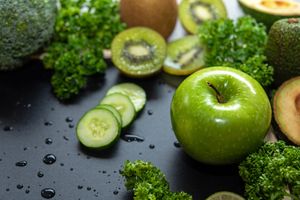
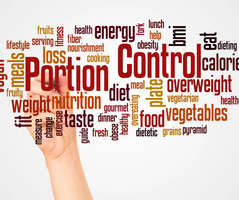
The Power of Portion Control: Unlocking the Benefits for Better Health
Unlock Better Health Through Portion Control
Let's talk about Portion Control.
In the quest for better health, many people focus on what they eat but often overlook how much they eat. Portion control is a crucial, yet sometimes underestimated, aspect of healthy eating. This blog will explore the concept of portion control, its benefits, and practical tips for incorporating it into your daily routine.
What is Portion Control?
Portion control refers to managing the amount of food you consume in one sitting. It’s about being mindful of serving sizes to avoid overeating, which can lead to weight gain and other health issues. Portion control doesn't mean you have to deprive yourself; it’s about eating the right amount of food to meet your body's needs.
Here are the benefits of portion control:
It supports weight management and is ideal for weight loss
Managing portion sizes is a proven strategy for weight loss. By consuming smaller, more manageable portions, you reduce your caloric intake, making it easier to maintain or lose weight without feeling deprived.
It prevents overeating, it helps you avoid the temptation to eat more than necessary. Large portions can trick you into consuming more food, even if you're not hungry. By controlling portions, you align your intake with your actual hunger levels.
It promotes digestive health. Eating large amounts of food in one sitting can overwhelm your digestive system, leading to discomfort, bloating, and other digestive issues. Smaller portions are easier for your body to process, promoting better digestion.
Portion control and blood sugar. Consuming large meals, especially those high in carbohydrates, can cause spikes in blood sugar levels. Portion control ensures a more gradual release of glucose into the bloodstream, helping to maintain stable blood sugar levels and reduce the risk of type 2 diabetes.
Mindful eating and portion control
Portion control is closely linked to mindful eating, which involves paying full attention to the eating experience. By controlling portions, you become more aware of what and how much you're eating, which can lead to better food choices and a more satisfying eating experience.
Here are a few practical tips for effective portion control.
Use smaller plates and bowls, it's a simple way to control portions by using smaller dishes. Smaller plates make portions look larger, tricking your brain into feeling satisfied with less food.
How to measure food portions by using measuring cups, spoons, or a kitchen scale to accurately measure your portions, especially when eating high-calorie foods. Over time, you'll learn to estimate portions more accurately.
Planning your meals in advance allows you to control portion sizes better. Prepare meals that include the right balance of protein, carbohydrates, and fats in appropriate amounts to avoid overeating.
Listen to Your Body and pay attention to your hunger and fullness cues. Eat slowly and stop when you feel satisfied, not stuffed. This practice can prevent overeating and help you enjoy your meals more. I also recommend not to eat in front of the TV, sit at the table and enjoy your meal.
Apply a portion control strategy and avoid eating directly from a package because it can lead to mindless overeating. Instead, portion out a reasonable amount and put the rest away before you start eating.
The conclusion is that portion control is a powerful tool for maintaining a healthy weight, improving digestion, and promoting overall well-being. By adopting portion control strategies, you can enjoy your favorite foods in moderation while reaping the benefits of a balanced diet. Remember, it’s not just about what you eat, but how much you eat that truly counts.
By implementing these simple yet effective tips, you can take control of your portions, your health, and ultimately, your life.
#MindfulEating #HealthyLiving #WeightManagement #NutritionTips #healthyfood
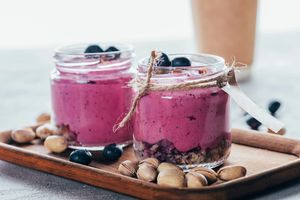
Supercharge Your Immune Health with the Right Nutrition
Essential Diet Tips and Nutrient-Rich Foods to Keep Your Immune System Strong
We all want to stay healthy, especially with everything going on these days. One of the best ways to keep our immune systems strong is by paying attention to what we eat. The right foods can make a big difference in how well our bodies fight off illnesses.
Nutrients That Really Make a Difference
Certain nutrients are super important when it comes to supporting our immune systems. Take Vitamin C, for example—it’s a powerhouse that helps protect our cells. You can find it in citrus fruits like oranges and lemons. Then there’s Zinc, which is crucial for immune cell function. You can get it from foods like nuts, seeds, and whole grains.
Foods That Give Your Immune System a Boost
Adding immune-boosting foods to your meals is easier than you might think. Leafy greens like spinach and kale are loaded with vitamins A and C, which are great for your immune health. Also, don’t forget about probiotics—foods like yogurt and fermented veggies help keep your gut healthy, and a healthy gut means a stronger immune system.
Simple Lifestyle Changes for Better Immunity
It’s not just about food, though. Staying active, getting enough sleep, and managing stress are all important for keeping your immune system in top shape. Drinking plenty of water and avoiding processed foods can also make a big difference.
Here’s a short list of some of the most essential nutrient-rich foods:
1. Spinach - Rich in Vitamins A, C, and K, as well as iron and magnesium.
2. Salmon - High in Omega-3 fatty acids, Vitamin D, and protein.
3. Blueberries - Packed with antioxidants, Vitamin C, and fiber.
4. Yogurt- Contains probiotics, calcium, and B vitamins.
5. Almonds - Loaded with Vitamin E, healthy fats, and magnesium.
6. Sweet Potatoes - Full of beta-carotene (Vitamin A), fiber, and potassium.
7. Broccoli- High in Vitamins C, K, and folate, plus fiber.
These foods are not only nutrient-dense but also offer a variety of health benefits that support overall well-being, including immune health. I'll be adding some tasty recipes with some of these nutrient rich foods to my recipe box soon.
Ok, time to wrap it up.
Taking care of your immune system doesn’t have to be complicated. By eating nutrient-rich foods and making a few healthy lifestyle choices, you can give your body the support it needs to stay healthy. Remember, good nutrition is the foundation of a strong immune system!
#ImmuneHealth #BoostYourImmunity
#HealthyLiving #ImmunityBoost
#WellnessTips #HealthyEating
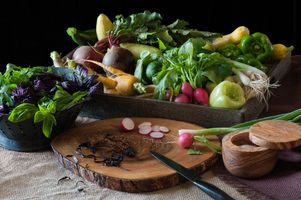
7 Essential Foods That Transformed My Diet—and Could Transform Yours Too
How These Nutrient-Packed Superfoods Helped Me Feel Healthier and Happier
I’ve always believed that what we put into our bodies matters, but it wasn’t until I started focusing on nutrient-rich foods that I truly felt the difference. These aren’t just any foods—they’re powerhouses that have the potential to supercharge your health, just like they did mine. Let me take you through the journey of how adding these seven superfoods to my diet transformed how I feel every day.
1. Spinach: Love it, my go-to green hero
Spinach has always been a staple in my kitchen. This leafy green is like nature’s multivitamin—it’s loaded with Vitamins A, C, and K, plus iron and magnesium. I noticed that adding spinach to my meals not only boosted my energy but also kept my skin looking vibrant. Whether I toss it into a salad, blend it into a smoothie, or sauté it with garlic, spinach always leaves me feeling nourished and strong.
2. Fresh salmon: The Delicious Way to Get My Omega-3s
I’ve always enjoyed seafood, but it wasn’t until I made fresh salmon a regular part of my diet that I felt its true benefits. Rich in Omega-3 fatty acids, salmon supports heart health and keeps inflammation at bay. It’s also packed with Vitamin D and high-quality protein. Whether it’s grilled, baked, or pan-seared, salmon has become my go-to for a meal that leaves me feeling satisfied and energized.
3. Blueberries: The Tiny Berries with Big Benefits
Blueberries may be small, but they’re mighty when it comes to health benefits. I add them to my smoothies or plain Greek yogurt.
These little gems are bursting with antioxidants like Vitamin C and Vitamin K. I started adding them to my morning yogurt or snacking on them throughout the day, and I noticed a real difference in how I felt—more vibrant and less prone to getting run down. Plus, they’re a tasty way to get a fiber boost!
4. Yogurt: My Secret to a Happy Gut
I’ve always loved yogurt, I grew up on it but when I learned about the power of probiotics, it became more than just a snack. Yogurt is packed with these live bacteria that are fantastic for gut health, which is connected to everything from digestion to immunity. Now, I opt for plain, unsweetened yogurt and add a drizzle of honey or a handful of nuts for a delicious, gut-friendly treat that supports my overall well-being.
5. Almonds: My Healthy Snack Savior
Almonds have become my go-to snack when I need something quick and satisfying, well actually most nuts, especially pistachios.
They’re rich in Vitamin E, healthy fats, and magnesium, all of which keep me going through the day. I’ve found that a handful of almonds not only curbs my hunger but also gives me the steady energy I need, without the crash. Plus, they’re perfect for keeping in my bag for whenever I’m on the go.
6. Sweet Potatoes: My Comfort Food with Benefits
Sweet potatoes are like the perfect comfort food that’s also incredibly good for you. Loaded with beta-carotene (which turns into Vitamin A in our bodies), they support everything from vision to immune health. I love roasting them until they’re crispy on the outside and tender on the inside, or mashing them up as a side dish. They’re not just delicious—they’re also incredibly nourishing.
7. Broccoli and Brocolinni: The Veggie I always have on hand
Broccoli wasn’t always my favorite, but once I learned about its health benefits, I found new ways to enjoy it. Packed with Vitamins C and K, plus fiber and folate, this super veggie helps support my immune system and keeps me feeling full and satisfied. Whether I’m steaming it, stir-frying it, or just roasting it with a bit of olive oil, broccoli has become a staple on my plate.
Let’s wrap it up: The Foods That Make Me Feel My Best
By making these nutrient-rich foods a regular part of my diet, I’ve noticed significant changes in how I feel—more energy, better skin, and an overall sense of well-being. If you’re looking to feel healthier and happier, I can’t recommend these superfoods enough. They’ve made a big difference in my life, and I’m sure they can do the same for you. Give them a try, and see how your body thanks you!
HealthyEating #Superfoods #WellnessJourney
#BoostYourHealth # eatwell #WholeFoods
#BalancedDiet #NutritionTips
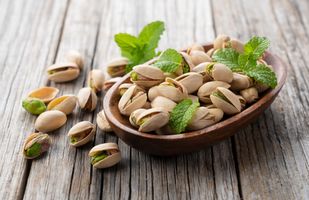
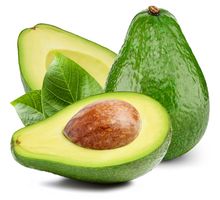
Why Avocados Are the Ultimate Nutrient-Rich Superfood for Weight Loss and Wellness
Boost Your Health with Antioxidants, Fiber, and Versatile Avocado Recipes"
The Ultimate Guide to Avocados: My Go-To Superfood
There’s one ingredient I can’t seem to get enough of—avocados. A fruit that I grew up on. I love them for their creamy texture, their subtle, earthy flavor, and most of all, for their amazing nutritional benefits. If you’ve ever taken one of my cooking classes or read my blog, you know how passionate I am about using fresh, wholesome ingredients, and avocado is one of those all-stars I can’t stop recommending.
I remember the first time I tried an avocado. I was 4 years old in Caracas, Venezuela, and I was curious about this green, nutrient-packed fruit. At first, I wasn’t sure if I was ready to try it, but after one bite, I was hooked! I started eating avocado on toast regularly for breakfast, enjoying the healthy fats and creamy texture that it added to my meal. As I grew up, my mother taught me more about the versatility and health benefits of avocados—how they are rich in fiber, antioxidants, and essential vitamins. From that moment on, avocados became a regular staple in my kitchen, not just for their delicious flavor but for their incredible nutritional value. The more I learned about their role in heart health and weight management, the more I fell in love with incorporating avocados into my meals—both for their health benefits and the delicious possibilities they bring to a dish.
Why Avocados Are My Nutritional Powerhouse
Did you know that avocados are full of healthy fats? And I don’t mean just any fats—I’m talking about the good kind: monounsaturated fats. These fats, particularly oleic acid, do wonders for your heart health. They help lower bad cholesterol (LDL) and raise good cholesterol (HDL), which is key for maintaining a healthy heart.
But that’s not all! One avocado is also packed with fiber—about 10 grams, in fact. This is perfect for keeping your digestive system happy and your energy levels steady throughout the day. Trust me, after a breakfast of avocado toast, you won’t be reaching for those mid-morning snacks.
On top of that, avocados are loaded with essential vitamins and minerals. They’re a great source of Vitamin K, which is important for bone health, and Vitamin E, a natural antioxidant that does wonders for your skin. You’ll also find Vitamin C in avocados, which supports your immune system and helps keep your skin looking radiant. And let’s not forget about potassium! Avocados actually contain more potassium than bananas, which is great for keeping your blood pressure in check.
How I Love to Use Avocados in My Cooking
If you’re following my tutorials, you’ll know I always look for easy ways to incorporate avocados into everyday meals. It’s not just because they’re healthy—it’s because they’re so versatile and, let’s be honest, delicious!
Avocado Toast: Yes, it’s trendy, but for a good reason! I love spreading mashed avocado on whole-grain toast, sprinkling it with sea salt, cracked pepper, and a squeeze of lemon. Add a poached egg on top, and you’ve got yourself a breakfast that’s nutritious, filling, and incredibly satisfying.
Smoothies: Here’s a trick I’ve picked up—adding half an avocado to my morning smoothie makes it luxuriously creamy, and the healthy fats keep me energized all day long. Try it with spinach, almond milk, and a bit of honey—so refreshing!
Salads: Avocados are the perfect addition to salads. Whether it’s a fresh summer salad with tomatoes, cucumber, and basil, or a heartier winter bowl with quinoa and roasted vegetables, avocados add that rich, buttery texture that balances everything out.
Guacamole: This classic recipe never goes out of style in my house. I make it fresh with chopped onions, cilantro, lime, and a pinch of salt. Sometimes I get creative and add pomegranate seeds or roasted corn for a unique twist.
Desserts: Believe it or not, avocados work beautifully in desserts! One of my favorite recipes is a chocolate avocado mousse—it’s smooth, decadent, and no one can ever tell there’s avocado in it. It’s the perfect guilt-free treat!
Avocados are excellent for glowing skin
It’s not just what avocados can do for your body—your skin will thank you, too! The combination of healthy fats and antioxidants in avocados helps reduce inflammation, making your skin appear softer and more youthful. I’ve noticed that since I started eating more avocados, my skin feels more hydrated and has that natural glow we all strive for. If you’re looking for a simple way to enhance your skin from the inside out, I can’t recommend avocados enough.
A Note on Sustainability
While avocados are incredibly healthy, it’s also important to think about how they’re grown. Avocado farming has faced criticism for contributing to deforestation and water consumption issues in some regions. So, I always make an effort to source avocados from sustainable farms when possible. Look for organic or Fair Trade labels—they ensure that the farmers and the environment are being cared for responsibly. As much as we love our avocados, we need to enjoy them in a way that supports our planet.
Why I eat avocados regularly (and You Should Too!)
After years of cooking professionally and teaching others about the importance of nutritious food, I can confidently say that avocados are one of the best things you can add to your diet. They’re packed with healthy fats, full of fiber, and loaded with vitamins and minerals. Whether you’re looking to boost your heart health, maintain a healthy weight, or keep your skin glowing, avocados have something for everyone.
And let’s not forget—they taste amazing! Whether they’re blended into a smoothie, spread on toast, or added to a salad, avocados make every meal just a little bit better. So, next time you’re at the market, grab a few avocados and start experimenting. Trust me, your body (and your taste buds) will thank you!
#AvocadoLover #HealthyLiving #Superfood #NourishYourBody #HeartHealth #HealthyFats #GlowFromWithin #WeightLossJourney #SustainableEating #SkinCareStaple
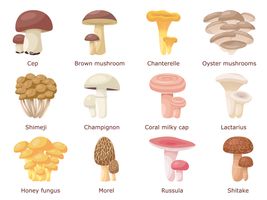
The Power of Mushrooms: A Delicious Superfood Packed with Nutritional Benefits
Discover How Mushrooms Can Transform Your Dishes and Boost Your Health with Antioxidants, Vitamin D, and Fiber
Mushrooms have always fascinated me, not just as a chef, but also as someone passionate about nutrition and health. My journey with mushrooms began years ago when I first experimented with their unique flavors in my dishes. What started as a simple ingredient quickly became one of my favorites for its versatility, rich nutritional benefits, and ability to transform any meal.
I remember the first time I discovered the range of flavors and textures mushrooms bring. From the bold, meaty portobellos perfect for grilling to the delicate and earthy shiitakes that pair so beautifully in stir-fries, mushrooms have always found a way to surprise me. They’ve become an essential part of my culinary repertoire—and not just because they taste incredible.
Mushrooms are truly a superfood, and they deserve that title! Packed with antioxidants, they’re an immune-boosting powerhouse that helps fight off free radicals in the body. They’re also an excellent source of vitamin D, which is essential for bone health and boosting your immune system—especially during the colder months when sunlight is harder to come by.
But the health benefits don’t stop there. Mushrooms are naturally low in calories and high in fiber, which makes them a perfect addition for anyone looking to maintain a balanced, healthy diet. Plus, the essential B vitamins they contain play a critical role in supporting energy levels and brain function.
I’ve loved incorporating mushrooms into everything from my favorite mushroom risotto to hearty, plant-based dishes where mushrooms stand in as a meaty substitute. Their texture and depth of flavor make them an all-star ingredient, whether you're cooking a quick weeknight meal or preparing something more elevated for special occasions.The best part? No matter how you choose to cook them, mushrooms retain their nutritional value while adding richness to your dishes. Whether sautéed, grilled, roasted, or even enjoyed raw in a salad, mushrooms can easily become a staple ingredient in your kitchen too!
So, what are your favorite ways to use mushrooms in your cooking? If you’re looking to explore more ways to incorporate nutrient-rich ingredients like mushrooms into your meals, subscribe to my recipe box on this website for mouthwatering mushroom-inspired recipes, or purchase one of my cooking tutorials to learn how to make the most of mushrooms in your meals and elevate your cooking with nutritious, flavorful creations!
#Mushrooms #Superfood #HealthyEating #Antioxidants #VitaminD #NutrientRich #PlantBased #ImmuneBoosting #BalancedDiet #FiberRich #WholeFoods #NutritionTips #ChefEliane


Black Garlic: Uncover the Health Benefits and Delicious Ways to Use This Superfood in Your Cooking.
Discover how black garlic can boost your health with powerful antioxidants and elevate your recipes with its rich, umami flavor. Learn easy ways to incorporate this fermented ingredient into your everyday meals.
Black garlic might sound exotic, but it’s becoming a culinary superstar in kitchens around the world. This fermented garlic, with its rich, umami-packed flavor and numerous health benefits, is an ingredient you’ll want to add to your cooking repertoire. Whether you're a seasoned chef or an adventurous home cook, learning how to use black garlic can elevate your dishes in ways regular garlic can’t.
What is Black Garlic?
Black garlic is made by fermenting raw garlic bulbs over weeks at low heat and humidity. This process transforms the garlic cloves into a dark, soft, and almost sweet ingredient with a flavor profile resembling molasses, balsamic vinegar, or even tamarind. The sharpness of raw garlic mellows out during fermentation, resulting in a unique ingredient that can be used in savory or sweet dishes alike.
The Health Benefits of Black Garlic
Beyond its complex flavor, black garlic offers several health benefits, making it a powerhouse ingredient for health-conscious cooks.
📌Rich in Antioxidants: Black garlic is known for its high levels of antioxidants, which help to neutralize free radicals in the body. These antioxidants are believed to promote heart health, reduce inflammation, and may even have anti-aging properties.
📌Improved Digestion: The fermentation process creates compounds in black garlic that can aid digestion. For individuals with sensitive stomachs, it’s a gentler alternative to raw garlic, which can sometimes cause bloating or discomfort.
📌Blood Sugar Management: Black garlic contains compounds that may help regulate blood sugar levels, which is especially important for those managing diabetes or pre-diabetes. Incorporating it into a diabetes-friendly diet can add flavor without negatively impacting blood sugar.
📌Boosted Immune System: Garlic in any form is known to support immune health, but black garlic’s higher antioxidant content may offer even more protection against common illnesses and infections.
How to Use Black Garlic in Cooking
Black garlic’s versatility in the kitchen is part of what makes it so special. Its deep, almost savory-sweet flavor can be used in everything from dressings to desserts. Here are some ideas on how to use black garlic in your next meal:
1. Sauces and Dressings: Blend black garlic into your vinaigrette for a rich, umami-packed dressing. It also works beautifully when pureed into a dipping sauce for meats, or added to pasta sauces to boost depth of flavor.
2. Marinades: Black garlic pairs well with meats like beef, pork, or chicken. Use it in a marinade with soy sauce, olive oil, and a splash of vinegar for a balanced, flavor-packed dish.
3. Mashed Potatoes or Risottos: For a luxurious twist, mash black garlic into your potatoes or stir it into risotto. It adds an earthy sweetness that complements creamy dishes perfectly.
4. Desserts: Believe it or not, black garlic can be used in desserts. Its molasses-like flavor works well in chocolate-based desserts or with honey and fruits like figs and pears.
Where to Buy Black Garlic
You can often find black garlic in specialty food stores, farmers markets, or health food shops. If you’re into DIY, you can even make your own black garlic at home with a rice cooker or dehydrator by keeping the garlic at a low, steady temperature over several weeks.
Black Garlic: The Secret Ingredient You Didn’t Know You Needed
Whether you’re looking to spice up your everyday meals or create dishes that will impress your dinner guests, black garlic is an ingredient worth trying. Not only does it add depth and complexity to your cooking, but its health benefits make it a smart addition to any diet. So, the next time you’re in the kitchen, reach for some black garlic and discover the magic for yourself!
#BlackGarlic
#HealthyEating
#Superfoods
#DiabetesFriendly
#Antioxidants
#FlavorUpgrade
#food #healthy
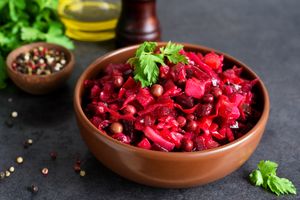
Beets Made Easy: Top Cooking Methods and Healthy Beet Recipes
Explore Simple Techniques for Cooking Beets and Get Inspired with Tasty Recipes Like Beet Carpaccio, Roasted Beet Salad, and More!
Beets: A Vibrant and Nutritious Addition to Your Kitchen
Beets are a colorful, nutrient-rich root vegetable that deserve a spot in every kitchen. With their earthy sweetness and versatility, they can transform any meal, from a simple side dish to a stunning salad centerpiece. Whether you're new to cooking beets or looking for fresh ideas, I’ll walk you through various cooking methods and share some delicious recipes that make the most of this vibrant veggie.
Why Beets Should Be in Your Diet
Beets are more than just their good looks—they're packed with essential nutrients that make them a healthy choice for any meal. Here’s what makes beets so beneficial:
High in Folate: Beets are an excellent source of folate, which is crucial for cell growth and repair. This makes them especially important during pregnancy.
Supports Heart Health: Thanks to their natural nitrates, beets can help relax and widen blood vessels, which can lead to better circulation and lower blood pressure.
Energy Booster: Drinking beet juice or adding beets to your diet can enhance stamina and endurance, making it a favorite among athletes.
Digestive Support: Beets are loaded with fiber, helping to keep your digestive system running smoothly while keeping you feeling fuller longer.
How to Cook Beets: Simple Techniques for Every Taste
Beets can be cooked in various ways, each bringing out a different side of their flavor and texture. Here are my favorite methods:
1. Roasting Beets
Roasting beets brings out their natural sweetness and adds a rich, caramelized flavor. Simply preheat your oven to 400°F (200°C), scrub the beets clean, wrap them in foil, and bake for 45-60 minutes until tender. Once they cool, you can easily peel off the skins. These roasted beauties are perfect for salads or grain bowls.
2. Boiling Beets
If you prefer a softer texture, boiling is a great option. Place cleaned beets in a pot, cover with water, and bring to a boil. Let them simmer for 30-45 minutes, depending on their size. Boiled beets are wonderful for making purees, soups, or as a vibrant side dish.
3. Steaming Beets
Steaming is a fantastic way to preserve the nutrients while keeping the beets tender. Place them in a steamer basket over boiling water, cover, and steam for about 30 minutes. Steamed beets can be sliced and tossed into salads or served simply with a drizzle of olive oil and a sprinkle of herbs.
4. Pickling Beets
If you love a tangy twist, try pickling your beets. Start by boiling or roasting them, then slice and soak them in a mixture of vinegar, sugar, and salt. Let them sit in the fridge for at least a day to develop flavor. Pickled beets are a perfect addition to salads or cheese boards.
5. Enjoying Beets Raw
Don’t overlook raw beets! They add a crunchy texture to dishes when thinly sliced or grated. Try adding raw beet ribbons to a salad or coleslaw for an extra layer of flavor and nutrients.
My Favorite Beet Recipes: Healthy and Delicious
If you’re ready to experiment with beets, here are some of my recipes that make this root vegetable shine:
Roasted Beet and Goat Cheese Salad:
Ingredients: 3 roasted beets, 1/2 cup crumbled goat cheese, 1/4 cup chopped walnuts, arugula, olive oil, balsamic vinegar.
Instructions: Slice the roasted beets and layer them over a bed of arugula. Add crumbled goat cheese and chopped walnuts. Finish with a drizzle of olive oil and balsamic vinegar for a simple yet elegant salad.
Vibrant Beet Hummus
Ingredients: 1 large steamed beet, 1 can of chickpeas, 2 garlic cloves, 1/4 cup tahini, juice of 1 lemon, 2 tbsp olive oil, salt.
Instructions: Blend all ingredients in a food processor until smooth. Adjust the salt to your taste. This beet hummus makes for a stunning and nutrient-packed dip, perfect with pita bread or fresh veggies.
Beet and Berry Smoothie
Ingredients: 1 raw beet (peeled and chopped), 1 cup frozen berries, 1 banana, 1 cup almond milk, 1 tbsp honey.
Instructions: Blend everything until smooth. This smoothie is packed with antioxidants and makes a great breakfast or post-workout boost.
Roasted Beet and Quinoa Power Bowl
Ingredients: 3 roasted beets, 1 cup cooked quinoa, 1 avocado, 2 tbsp pumpkin seeds, mixed greens, olive oil, lemon juice.
Instructions: Slice the roasted beets and avocado, then arrange them over a bed of quinoa and greens. Sprinkle with pumpkin seeds and finish with a drizzle of olive oil and a squeeze of lemon juice. It’s a nutritious and filling bowl that’s perfect for lunch.
Here is one of my favorite beet recipes that I often served as a starter in my restaurant in France:
Beet Carpaccio marinated in homemade Ginger Syrup
Ingredients: 3 large raw beets, 1 cup water, 1 cup sugar, 2-inch piece of fresh ginger (sliced). This will serve 4 starters.
Instructions: Slice the raw beets thinly using a mandolin. In a small saucepan, combine water, sugar, and ginger slices, bringing it to a boil until the sugar is complete dissoved. Let it cool and pour over the beet slices and toss. Marinate them overnight in the refrigerator. To serve: arrange the beet slices on a plate, slightly overlapping each other. Add a small handful of arugula, then drizzle with olive oil. Top with roasted pecans or pine nuts and a sprinkle of crumbled goat cheese.
This method helps tone down the earthy flavor, making it perfect for those who aren’t big beet fans—and it’s absolutely delicious!
Beets: A Delicious and Nutritious Addition to Your Table
Beets are a wonderful way to add both flavor and nutrients to your diet. From roasted and sweet to tangy pickled varieties, there’s no limit to what you can create with them. Plus, they’re easy to prepare and can elevate even the simplest of meals. I hope these recipes inspire you to get creative with beets and enjoy their delicious benefits.
#BeetRecipes
#HealthyEating
#PlantBased
#EatTheRainbow
#Superfood
#RecipeInspiration
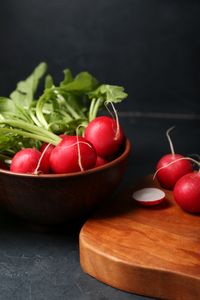
The Amazing Benefits of Radishes: A Nutrient-Packed Superfood
Radishes are often overlooked, but they are packed with nutrients and offer a range of health benefits that make them a great addition to your diet. Whether you enjoy them raw in salads or roasted for a more mellow flavor, radishes are versatile, delicious, and great for your health. Let’s explore the key benefits of this crunchy, colorful vegetable and why you should add them to your meals.
Rich in Nutrients
Radishes are low in calories but high in essential vitamins and minerals. They're a good source of vitamin C, which supports your immune system, and fiber, which aids digestion. Radishes also contain antioxidants that can help protect your body from free radical damage.
Promote Digestive Health
Radishes are an excellent source of fiber, which helps regulate your digestive system and prevent constipation. Their high water content also keeps you hydrated and supports regular bowel movements, making them a great choice for digestive health.
Support Weight Loss
Due to their low calorie and high fiber content, radishes are an ideal snack for those looking to manage their weight. They keep you feeling fuller for longer, which can help reduce overall calorie intake.
Improve Skin Health
The vitamin C found in radishes can help improve skin texture and reduce signs of aging. This powerful antioxidant supports collagen production, which helps keep your skin firm and smooth.
Boost Immunity
Packed with vitamin C, radishes give your immune system a healthy boost, helping your body fight off colds, flu, and other illnesses. Including radishes in your diet can help you maintain a strong immune system year-round.
How to Enjoy Radishes
Radishes are incredibly versatile and can be enjoyed in various ways. Slice them thin for a crisp addition to salads, roast them for a milder, sweeter flavor, or pickle them for a tangy, crunchy snack. No matter how you prepare them, you’ll be getting a nutritious boost with every bite.
Conclusion
Radishes are more than just a garnish—they’re a superfood that provides a wide range of health benefits. From boosting your immune system to improving digestion, this nutrient-rich vegetable is a fantastic addition to any healthy diet.
#RadishBenefits #Superfood #HealthyEating #NutrientRich #VitaminC
#ImmuneBoostingFoods #DigestiveHealth #WeightLossTips

Festive & Nutritious Holiday Meal Ideas: Deliciously Healthy Plates for Every Generation!
Finding Balance: Nourishing Choices for a Healthier Holiday Season
The holiday season always brings such a wonderful mix of joy, family, and, of course, delicious food. But I know how easy it is to get carried away with indulgence (and let’s be honest, it happens to all of us). So, this year, I’m looking for ways to keep things balanced – enjoying the holiday flavors we all love without feeling like I’ve overdone it. Here’s my approach to a healthier, more nourishing holiday season – I hope it sparks some ideas for you too!
Start with a Fresh, Colorful Appetizer Board
I love a festive board filled with colorful veggies, seasonal fruits, a few artisan cheeses, nuts, and olives. Not only does it look beautiful on the table, but it also feels satisfying without filling you up too much before the main meal. Plus, it’s a great way to set a healthier tone right from the start.
Revamp Those Holiday Side Dishes
While holiday meals tend to include buttery potatoes or sugary yams, there’s a way to make sides both delicious and nutritious. Think roasted Brussels sprouts with a touch of cranberry, maple-glazed carrots, or a savory cauliflower mash. These seasonal veggies offer all the festive flavors and warmth of the holidays, with a little less indulgence.
Find Balance with Sweet Treats
Yes, it’s the season for sweets! Instead of overloading on desserts, I’ll be mixing in some naturally sweetened options. Baked pears with a sprinkle of cinnamon or a fresh berry compote topped with a bit of Greek yogurt can be a lovely finish to a meal. It’s all about having those traditional treats in moderation while adding a few lighter options.
Choose Festive Low-Sugar Drinks
Sugary cocktails are tempting, but for a festive drink that doesn’t spike blood sugar, try sparkling water with pomegranate seeds or a splash of cranberry juice. If you’re a wine lover, a glass of dry red wine can be a nice choice – just enough to enjoy without going overboard.
Fill Up on Protein
I find that adding a good source of protein to my holiday meals helps keep me feeling satisfied and balanced. Dishes like herb-crusted salmon or a lean cut of roasted turkey breast can be a wonderful complement to carb-heavy sides, and they don’t leave you feeling overly full.
Mindfully Enjoy Every Bite
One of the best parts of the holidays is enjoying the foods we love. I try to indulge mindfully, really savoring each bite and enjoying every flavor. Listening to my body’s signals lets me indulge without feeling like I’ve overdone it, which I actually never do anyway because I am a very moderate eater.
Move a Little, Laugh a Lot
And finally, staying active – in simple ways! After a big meal, a light walk outside or even just some games with family can be refreshing and help with digestion. It’s a fun way to keep things moving without any extra effort.
This season, let’s celebrate with balance, enjoying those comforting holiday dishes and treating ourselves well. Here’s to a festive season filled with good food, laughter, and a little extra nourishment.
#HealthyHolidays #MindfulEating #FestiveBalance
#NourishedHolidays #HolidayWellness #CelebrationWithBalance

Poached Turkey Breast: A Light and Healthy Christmas Dinner Idea
Bring Tender, Juicy Turkey to Your Holiday Table with This Simple Cooking Method
Turkey has long been the star of holiday meals, but roasting isn’t the only way to prepare this versatile protein. Poaching is a lesser-known technique that yields incredibly tender, juicy turkey while keeping the dish light and nutritious. As a chef who values both flavor and health, I’ve come to love this method for its simplicity and the way it enhances the natural taste of turkey.
Poaching gently cooks the turkey in a flavorful broth, infusing it with subtle aromas. It’s a perfect choice for a festive Christmas dinner that’s as healthy as it is delicious. Pair it with a few vibrant sides, and you’ve got a meal that’s sure to impress your guests.
Why Choose Poached Turkey?
Lean and Healthy: Poaching doesn’t require added fats, making it a low-calorie option that’s perfect for health-conscious diners.
Tender and Moist: The gentle cooking process ensures that the turkey remains juicy and flavorful.
Infused Flavor: Cooking in a broth infused with herbs and aromatics enhances the turkey’s natural taste without overpowering it.
Recipe:
Herb-Infused Poached Turkey Breast
Ingredients:
1 boneless turkey breast 1 -1.5 kg (about 2-3 lbs)
4 cups (1 liter) low-sodium chicken broth
1 onion, quartered
2 carrots, peeled ane diced
2 celery stalks, sliced
3 garlic cloves, smashed
2 sprigs fresh thyme
2 sprigs fresh rosemary
1 bay leaf
Zest of 1 lemon
Salt and freshly ground black pepper to taste
Preparation:
1. Prepare the Broth
In a large pot, combine the chicken broth, onion, carrots, celery, garlic, thyme, rosemary, bay leaf, lemon zest, salt, and pepper. Bring to a gentle simmer over medium heat.
2. Poach the Turkey
Gently lower the turkey breast into the simmering broth. Reduce the heat to low, ensuring the liquid stays just below boiling. Cover the pot and poach for 25-30 minutes, or until the turkey reaches an internal temperature of 165°F (74°C).
3. Rest and Serve
Carefully remove the turkey from the pot and let it rest for 10 minutes. This helps the juices redistribute, ensuring tender slices. Serve the turkey breast with your favorite holiday sides.
Bonus Tip:
Strain the leftover broth and use it as a flavorful base for soups or sauces.
Perfect Side Dishes for Poached Turkey
1. Sautéed Green Beans with Garlic
Lightly sauté green beans in olive oil with a touch of garlic for a simple yet flavorful side.
2. Citrus-Glazed Carrots
Toss roasted carrots with a hint of orange juice and zest for a bright, festive twist.
3. Cauliflower Mash
A creamy, low-carb alternative to mashed potatoes that pairs beautifully with poached turkey.
Why This Recipe Shines for Christmas
Poached turkey breast is an elegant yet uncomplicated dish that offers a healthier alternative to traditional holiday mains. It’s ideal for those looking to enjoy a balanced meal without missing out on festive flavors.
This poached turkey breast recipe is a fantastic way to keep your Christmas dinner both light and satisfying. It’s a dish that combines simplicity, health, and elegance—perfect for a memorable holiday feast.
#HealthyChristmas #TurkeyDinner #PoachedTurkey #LeanProtein #FestiveAndHealthy #DiabetesFriendly #HolidayCooking #BalancedMeals #ChristmasRecipes #NutritiousHolidayMeals #epicureanadventureamsterdam

Power Up Your Plate: Vibrant, Protein-Packed Meals for Diabetes Management
Discover how to create lively, diabetes-friendly dishes with lean proteins, fresh herbs, and colorful veggies. Boost your health and flavor in every bite!
Living with diabetes has taught me a lot about the importance of nutrition. One thing I’ve come to appreciate is the incredible role protein plays in keeping me energized and my blood sugar levels stable. As a chef and someone who manages type 2 diabetes, I’ve learned that protein isn’t just a nutrient—it’s a game-changer in the kitchen.
Why Protein Matters to Me
For years, I believed that managing diabetes meant sacrificing flavor, but protein changed that. It’s essential for building and repairing tissues, supporting immune health, and most importantly for me, keeping meals satisfying and balanced. Whether I’m whipping up a quick breakfast or preparing a hearty dinner, protein is always a priority.
My Go-To Protein Sources
I love combining ingredients so my protein sources are as diverse as my recipes:
Plant-Based Favorites: Lentils, chickpeas, and tofu are my staples. They’re versatile, affordable, and packed with nutrients.
Lean Meats & Fish: Grilled chicken and salmon are regulars on my menu. Both are rich in protein and bursting with flavor when paired with fresh herbs.
Dairy Delights: Greek yogurt is a lifesaver. It’s creamy, high in protein, and works beautifully in both sweet and savory dishes.
Protein-Packed Meal Ideas
Here’s a sneak peek into some of my favorite meals that make managing diabetes a delicious journey:
Breakfast Boost: A spinach and mushroom omelet with a sprinkle of fresh thyme. It’s quick, satisfying, and keeps me full for hours.
Lunch Love: Quinoa salad with grilled chicken, avocado, and a handful of fresh basil. The perfect balance of protein, healthy fats, and greens.
Dinner Delight: Baked salmon with a sage butter sauce, served alongside roasted vegetables. It’s a meal that feels indulgent but is completely diabetes-friendly.
My Tips for Protein-Packed Cooking
Plan Ahead: I always have cooked quinoa, grilled chicken, or roasted chickpeas ready to toss into a quick meal.
Experiment with Flavors: Herbs like basil, thyme, and sage elevate simple proteins, turning everyday meals into something special.
Stay Balanced: While protein is key, I make sure to pair it with plenty of fiber-rich vegetables and healthy fats.
Embracing the Protein Trend
If you’re looking to make your meals more exciting and diabetes-friendly, start with protein. It’s helped me create dishes that are not only nutritious but also packed with flavor. The best part? You don’t have to compromise on taste or variety.
#DiabetesFriendly #HealthyEating #HighProtein #NutritionTips #BalancedDiet
#DiabetesSupport #HealthyLifestyle #ProteinPower #DiabeticChef #MealPrep #HealthyRecipes #DiabetesManagement #NutritionForDiabetes #PlantBasedProtein #LowCarbLife

